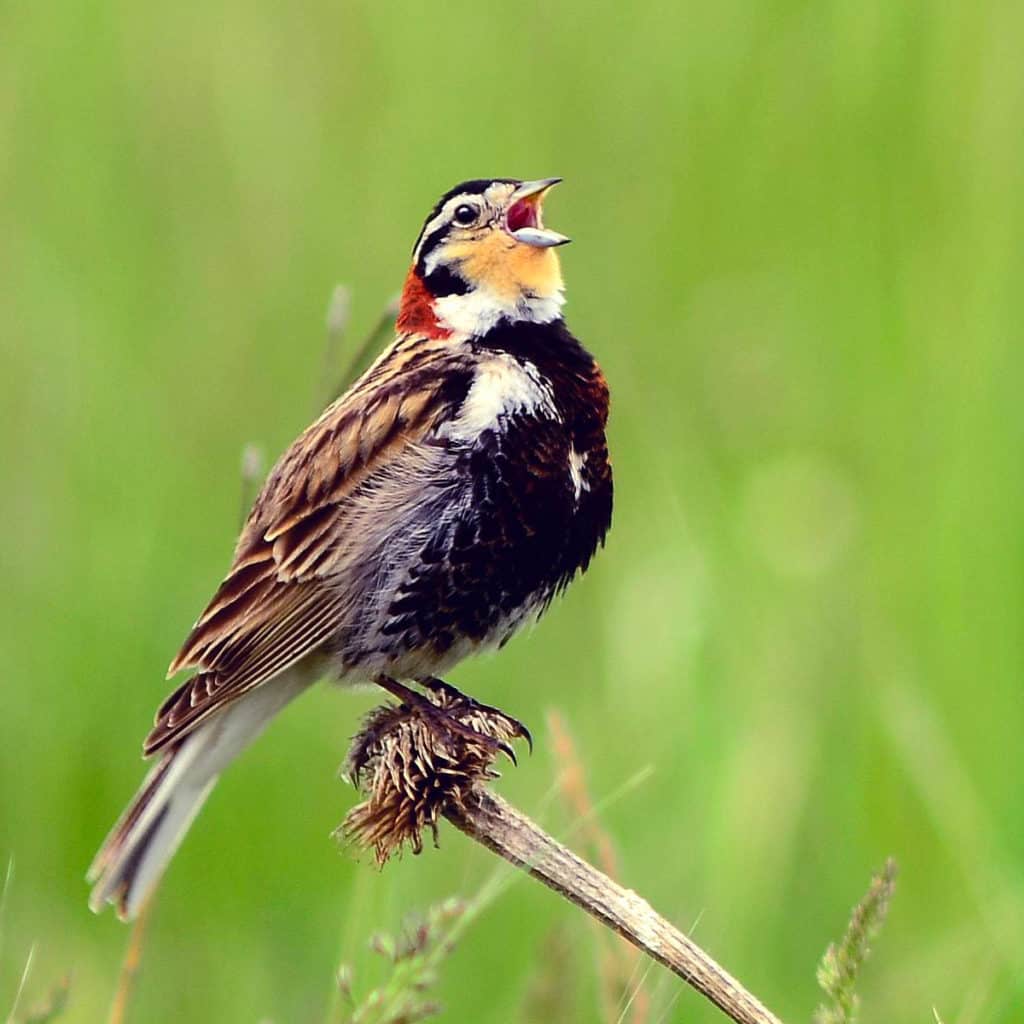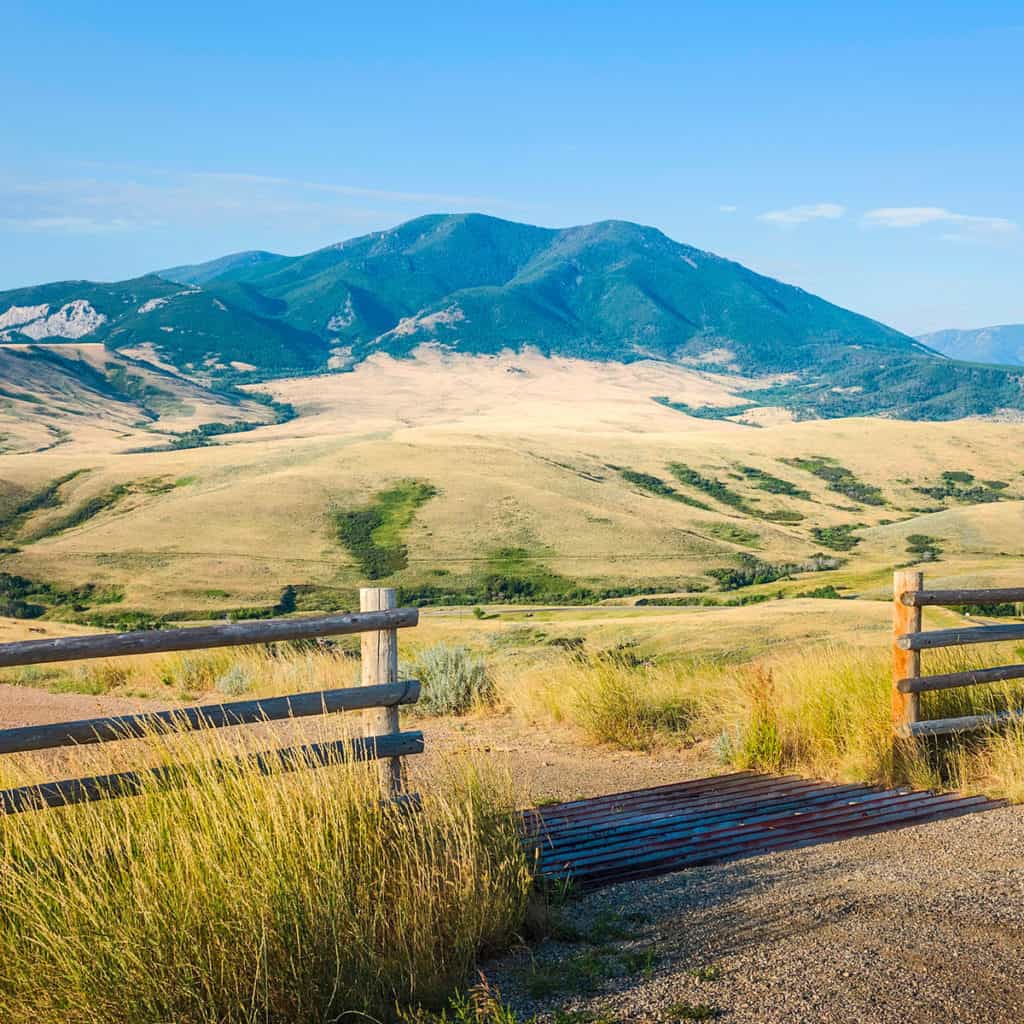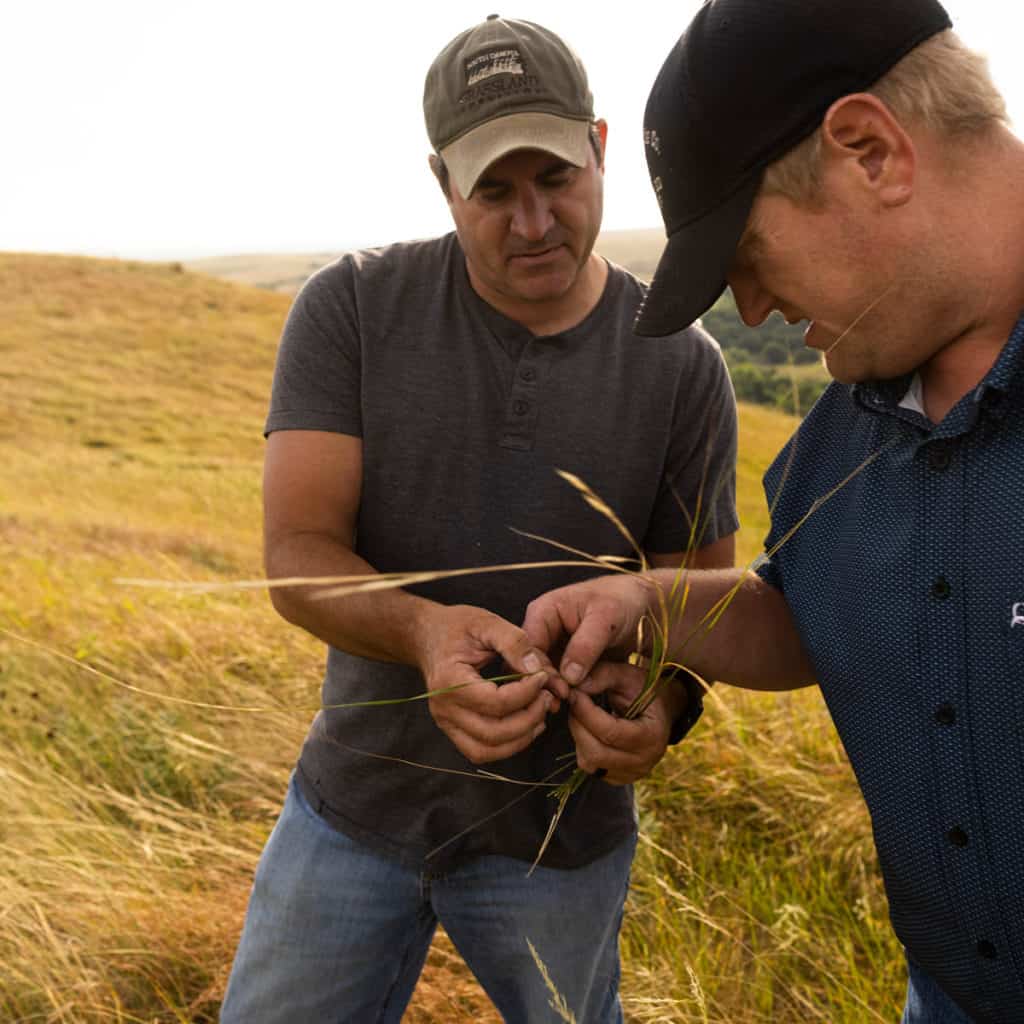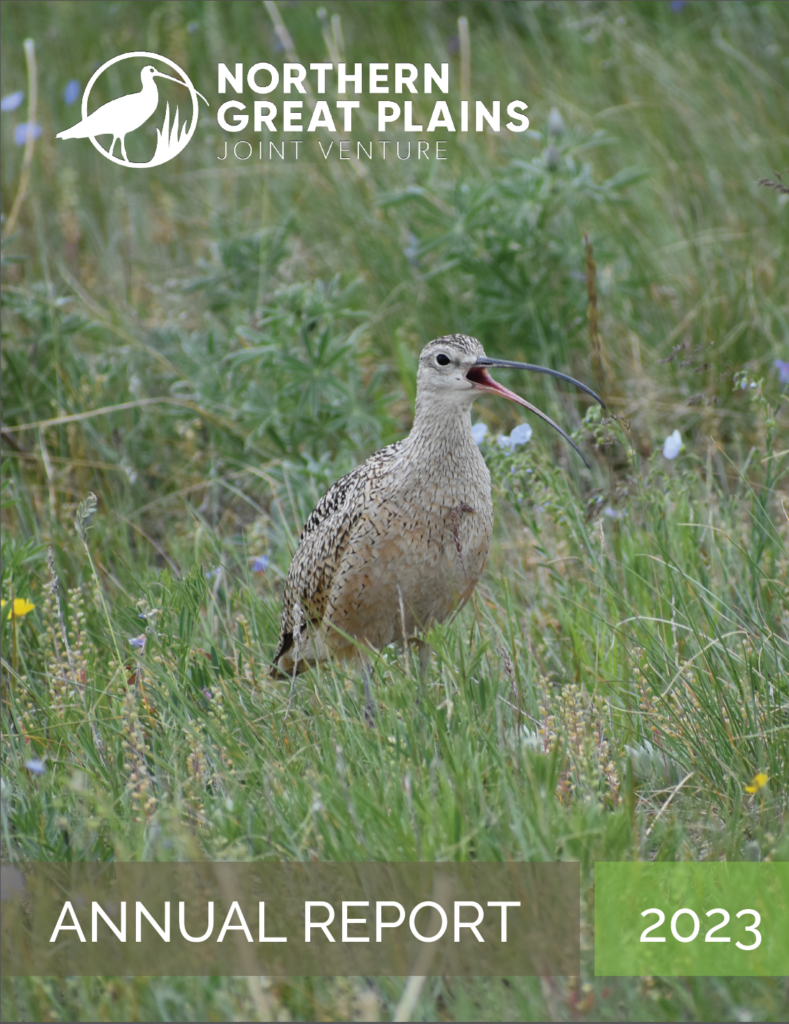Resilient grasslands support vibrant ranching communities, robust grassland bird populations, and sustainable ecosystem services.
Resilient Grasslands
photo by Mitch Kezar
Our Region
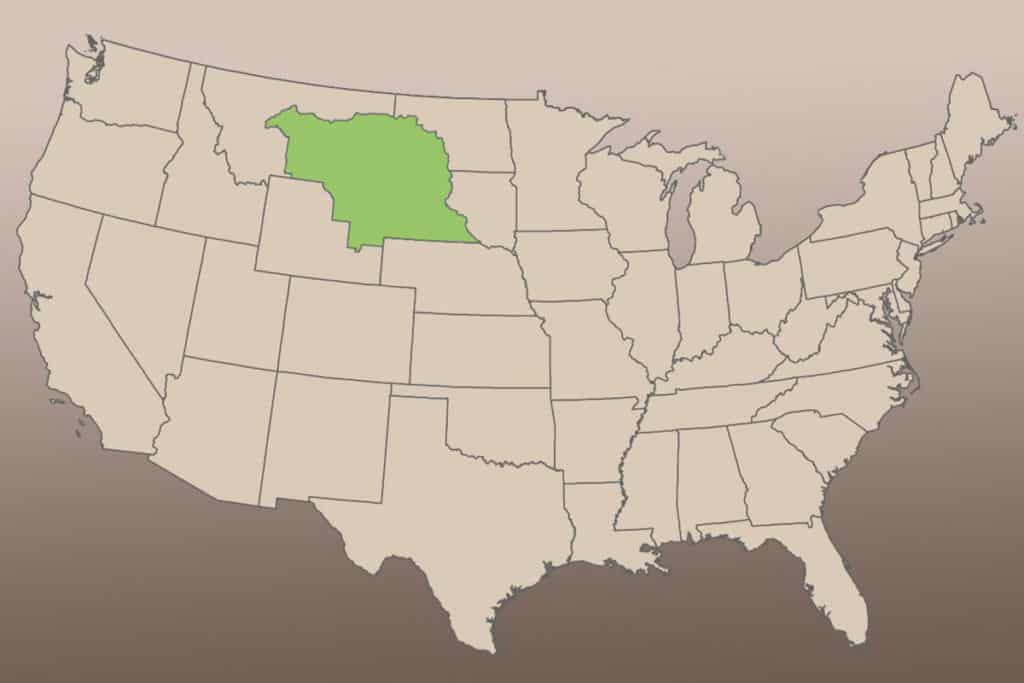
conservation across the plains
Long-billed Curlew by Ron R Bielefeld
2023 was a year of partnerships. Partnerships are hard work and they take time, but the benefits of working collaboratively pay dividends in the long run. Last year, NGPJV partners dug into building trust, enhancing collaborations, and building our networks, all working toward the common vision of enhancing and supporting resilient grasslands.
In this Annual Report, we showcase the work of our NGPJV partnership to work across fences, catalyze conservation, and leverage broader initiatives. We also quantified the collective footprint of conservation actions in the Northern Great Plains to elevate the impactful work of our partnerships. In 2024 we look forward to more capacity, deeper relationships, and ongoing targeted work that supports the people and the resources of the Northern Great Plains. Together, we are building a sustainable future!
Recent News
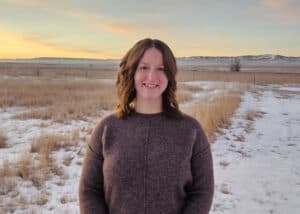
Science Integration: Bridging the Gap Between Science and On-the-Ground Conservation
Hi there! I’m Tayler Scherr—one of two Science Integration Specialists with the Northern Great Plains Joint Venture (NGPJV). I work primarily in southeastern and central Montana while Krista Erdman, my counterpart with the NGPJV, covers western South Dakota. I’m thrilled to be a part of the Joint Venture and would like to share with you
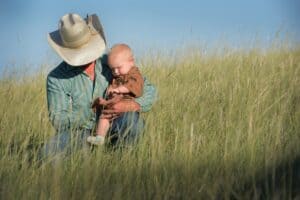
Dakota Grasslands–Where Good Things Grow
The South Dakota Grassland Coalition (SDGC) launched a new public service and education campaign designed to help protect and improve the health and function of native grasslands, North America’s most threatened ecosystem. The campaign, Dakota Grasslands – Where Good Things Grow, is produced by SDGC, in partnership with USDA’s Natural Resources Conservation Service, the South
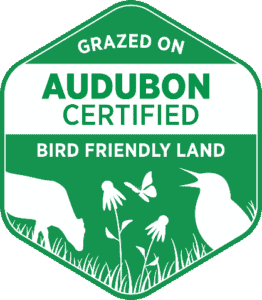
Working with Ranchers to Bend the Grassland Bird Curve
More than a decade ago, the National Audubon Society recognized that any successful grassland bird conservation approach needed to work collaboratively with the landowners and land managers who are the stewards of the vast majority of America’s grassland landscapes—the essential places for grassland birds. The Audubon Conservation Ranching program was conceived as a market-connected conservation

